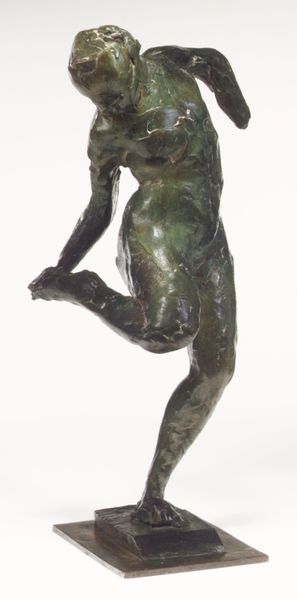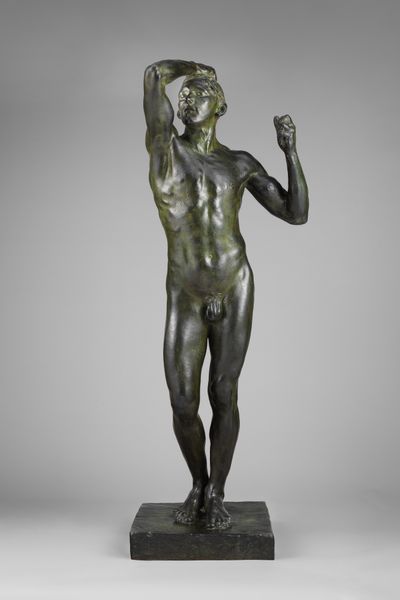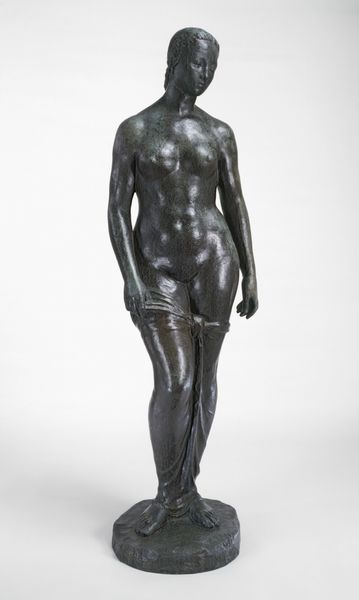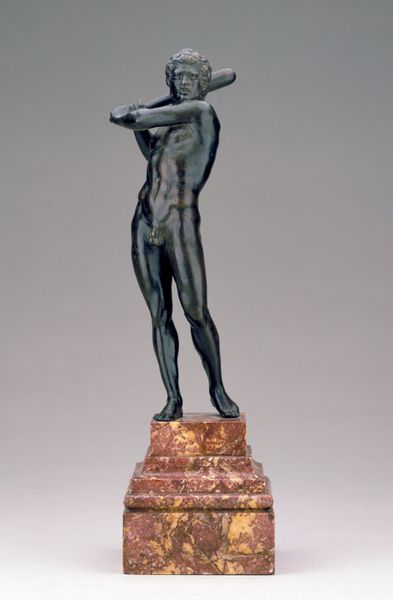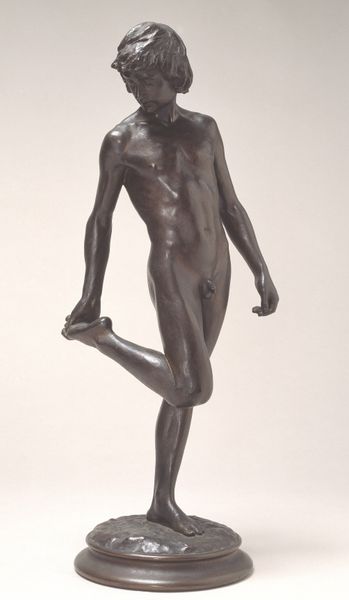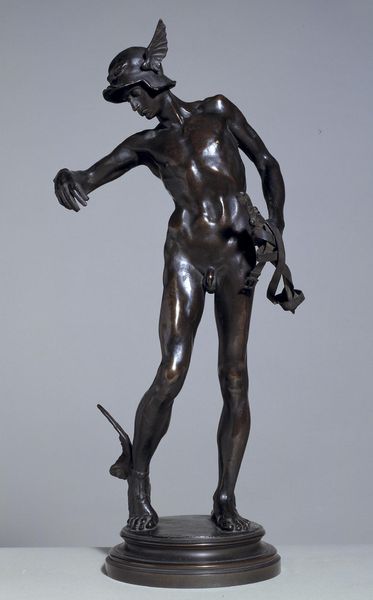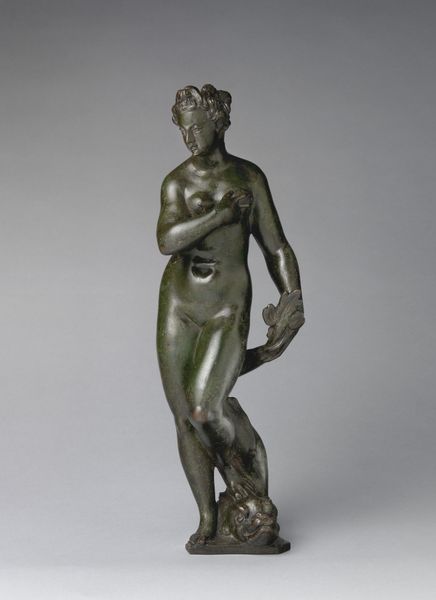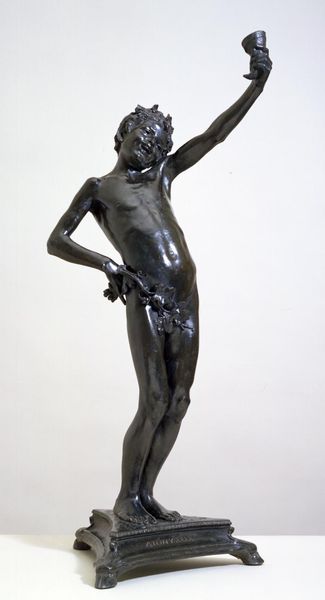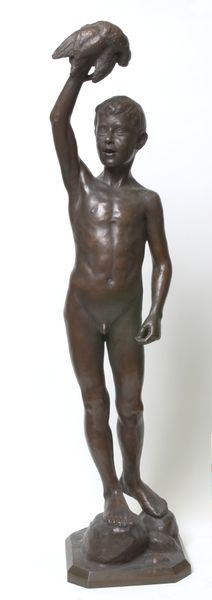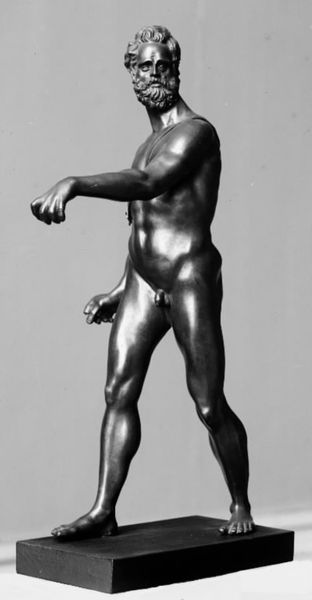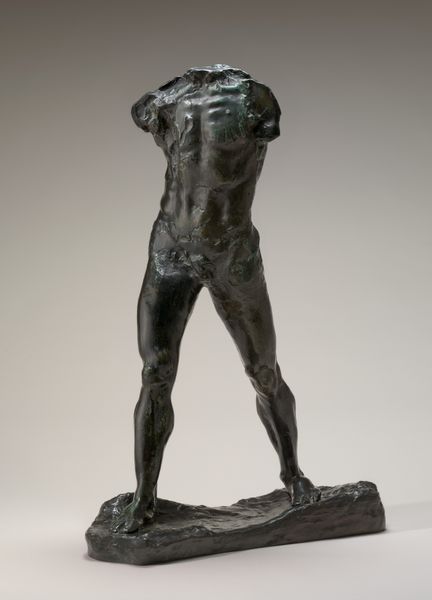
Dimensions: object: 911 x 292 x 241 mm
Copyright: © Millesgården, Sweden | CC-BY-NC-ND 4.0 DEED, Photo: Tate
Curator: Here we have Carl Milles' "The Sun Singer (Torso)", held within the Tate Collections. Editor: It strikes me as classically inspired, but also oddly unfinished—the verdigris bronze gives it an unearthed, ancient feeling. Curator: Milles was deeply influenced by classical sculpture, but this piece also reflects the early 20th-century fascination with the fragmented body. It challenges notions of wholeness and perfection often associated with idealized figures. Editor: Right, the act of isolating the torso, emphasizing raw material and the making process shifts our focus. Bronze casting itself is labor-intensive, embedding social and economic aspects into art. Curator: And let's not forget the social context. Milles was working in a period of immense social upheaval and changing views on the human body. The very idea of "sun singer" carries with it a certain mythology and pagan symbolism, a rebellion against traditional morality. Editor: The way the figure is truncated invites viewers to contemplate the absent limbs, the invisible labor. It questions not only art making but our expectations of classical ideals. Curator: Indeed, exploring the cultural narratives around the body, power, and representation. Editor: The materiality combined with fragmentation makes me think differently. Curator: A compelling testament to enduring power.
